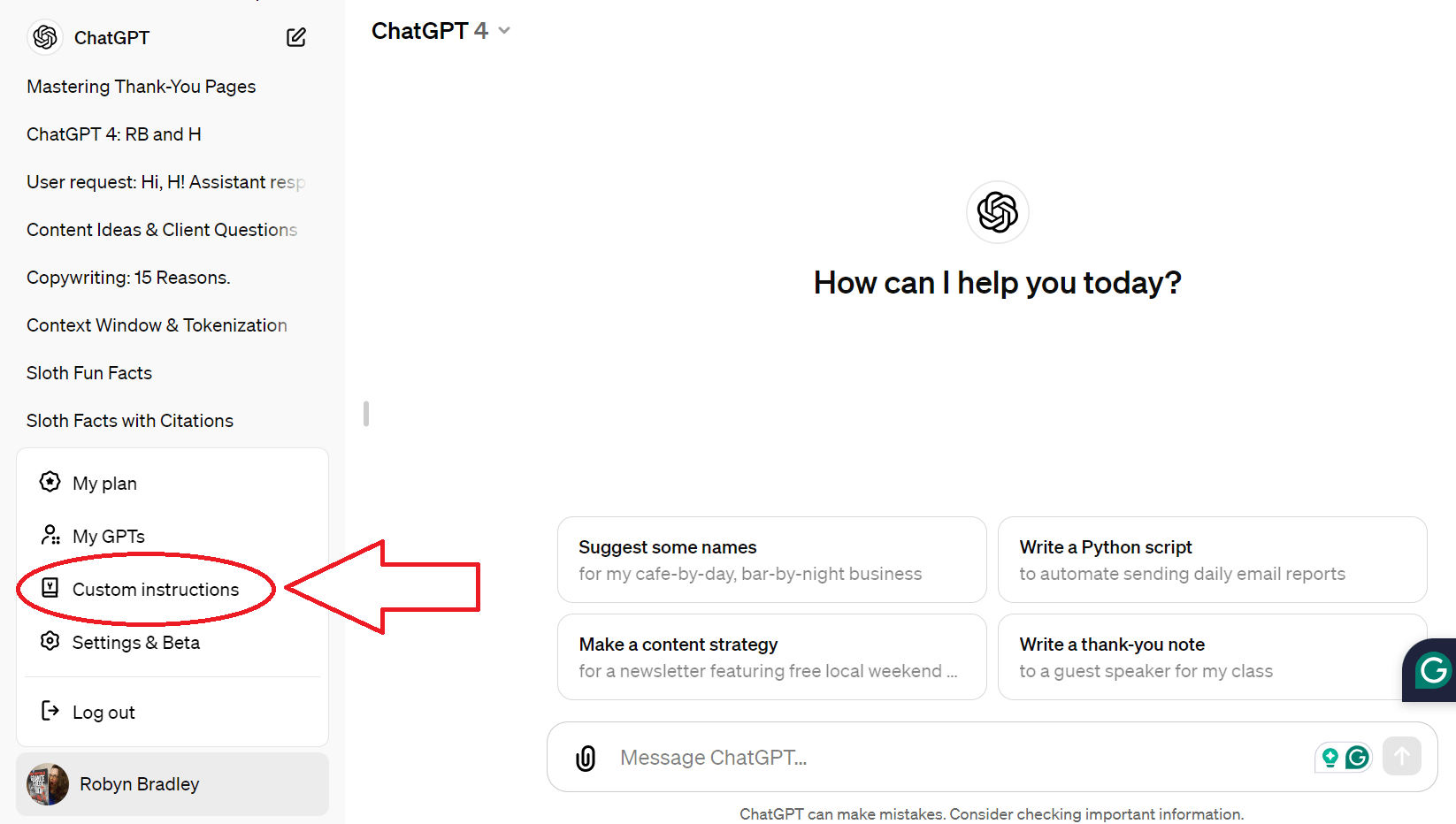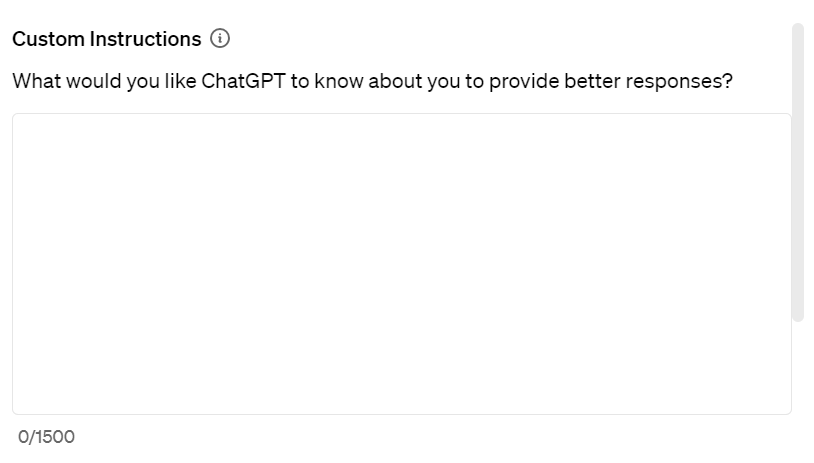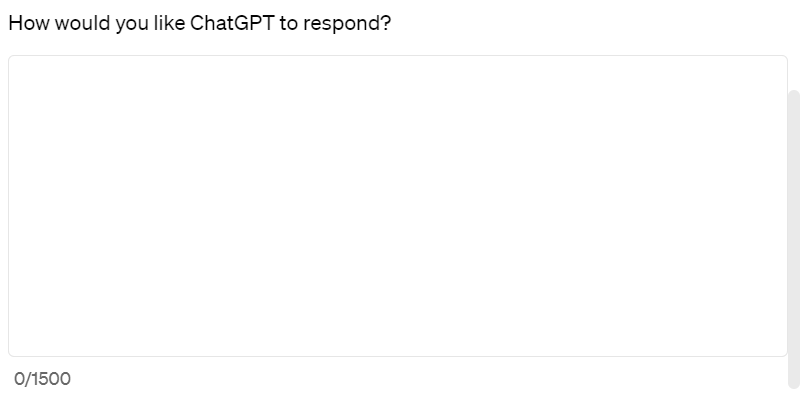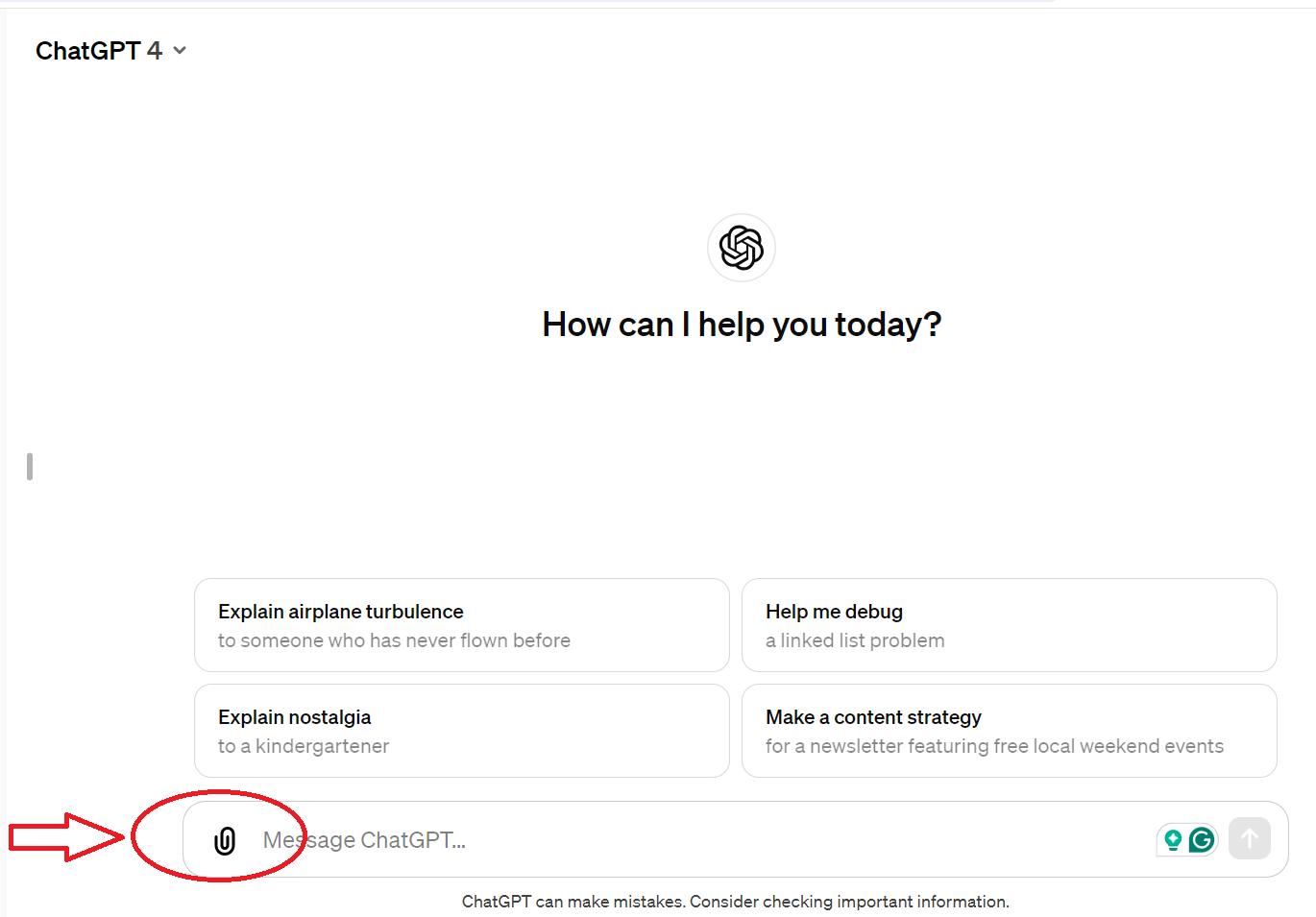4 Smart Ways to Use ChatGPT in Senior Living Marketing

It’s been a little over a year since people began buzzing about ChatGPT and other generative AI. Rumors swirled: Massive layoffs will ensue! Robots are poised to take over the world!
None of these doomsday prophecies happened. What did happen: ChatGPT became the fastest-growing app in history while continuing to evolve rapidly.
At Senior Living SMART, we still recommend treading carefully when using ChatGPT. But we also believe knowledge is power. ChatGPT has made several upgrades that smart marketers should be aware of. Below, we highlight strategies for using these upgrades in your senior living marketing.
Note: As we go to press, the first two items below can be done with a free account. The third and fourth suggestions involve having ChatGPT access the web. For this, you need a paid subscription plan, like ChatGPT Plus, which costs $20/month.
1. Set up “Custom Instructions” about your brand and brand voice.
If you want ChatGPT to produce content that sounds closer to your brand voice, the Custom Instructions section is the place to go because this is where you can teach it how to respond to your prompts.
How to access Custom Instructions in ChatGPT
- Navigate to your settings by clicking on your username. (If you have the ChatGPT app on your phone, click on the hamburger menu in the upper left and then click on your username at the bottom.)
- From there, click on “Custom Instructions.” (Or it might say, “Customize ChatGPT.”)
- You’ll have two boxes to fill in, both with a maximum of 1,500 characters.



Benefits of Using Custom Instructions
- Save time. You don’t need to rewrite the same instructions over and over.
- Continuously train (and improve) ChatGPT. You can continue fine-tuning your instructions over time so ChatGPT develops a deeper understanding of your brand.
- Easily swap in different instructions for different purposes or different communities. For example, let’s say you have four senior living communities under one brand “umbrella.” Each property could have its own set of Custom Instructions that you can swap in when you’re doing work related to that property.
Tips + Tricks
- Draft your instructions offline first. Create different versions of your brand and tone guidelines. You’ll need to experiment to see which instructions produce the best results.
- Don’t ditch human oversight. Even with Custom Instructions, ChatGPT likely won’t deliver content that sounds completely on-brand. But it should be closer than what it produced a year ago. Bottom line: You still need human writers to review and revise any ChatGPT-generated content (especially long-form pieces).
- Keep in mind Custom Instructions will apply to all new chats moving forward. You can update your instructions at any time. When you swap in new instructions, you must start a new chat for the instructions to take effect*.
*NOTE: As we go to press, ChatGPT has announced a new feature called Memory, allowing it to remember things from different chats. It’s currently available to only a few users, but this will likely change quickly.
- Don’t put in any proprietary brand info. A good rule of thumb with AI right now: Only share content, concepts, and ideas that are already publicly accessible.
2. Train ChatGPT to understand your personas.
You likely already have personas. (If you don’t, you should!)
Open a new chat, copy and paste your persona info into it, and ask ChatGPT to take on the role of this persona. Then, you can prompt it to do things like . . .
-
- Have ChatGPT brainstorm blog article topics that it would want to read. Again, it’s important to instruct ChatGPT to take on the role of the persona.
- Task ChatGPT with brainstorming headlines and subject lines that will likely resonate with the persona. Or give it the headlines/subject lines your team created. Ask ChatGPT to assume the persona’s role and ask which versions it likes best and why.
- Ask ChatGPT to assume the persona’s role and fetch recent articles, blog posts, and offers it finds interesting. Talk about valuable intel! You’ll better understand what content resonates with the persona. (NOTE: Currently, this task would involve a paid subscription since you’re asking ChatGPT to access the web.)
- Go a step further with the suggestion above, and ask ChatGPT to tell you what it liked about each piece of content—and where it could be improved or what questions it was left with. Pay attention to any content gaps ChatGPT points out. This will be an opportunity for your brand. You can create content that fills the gaps.
Any time you close a chat, ChatGPT automatically saves it. You can rename it accordingly—for example, “Adult Daughter Debbie Persona.” Then, return to this saved persona and open the chat whenever you want to do further work with ChatGPT about this persona.
See our earlier note above about a possible long-term memory feature in ChatGPT. If this comes to fruition, you won’t have to worry about continuing conversations in the same chat thread. In theory, with long-term memory, ChatGPT will be able to remember separate chats/conversations.
If you don’t have personas, you might be tempted to have ChatGPT craft them. While this could work for certain industries/brands, we don’t recommend doing this for senior living since many human emotions are at play—nuances exist between care levels and the people involved in the decision-making (for example, adult children vs. seniors).
Instead, develop personas based on actual conversations with residents, their families, and lost prospects. Need help? Persona development is one of our many areas of expertise.
- PRO TIP: If you conduct interviews with real residents, you could take the transcripts from the interviews, feed them to ChatGPT, and ask it to pull out the recurring pain points, etc.
3. Have ChatGPT perform competitor research and analysis.
When it launched, ChatGPT couldn’t access the web and was only trained on data through September 2021. But paid subscribers (ChatGPT Plus, Enterprise, and Team Workspaces) can now access the web in real-time (through Microsoft-owned Bing).
Nope, it’s far from perfect. ChatGPT is still prone to hallucinations, and you must triple-check any facts it serves up.
But give it 10 of your competitors’ websites and ask it to analyze things like messaging and on-page calls-to-action? THAT it can do—and lightning fast.
Use the following prompt and see for yourself.
-
- PROMPT: Assume the role of an expert in competitor analysis. Please review the following competitor websites. [List URLS] For each one, analyze messaging strengths and weaknesses and share your findings. Then, suggest ways for my community [URL] to differentiate its messaging.
This is one of dozens of prompts you could devise for competitor analysis and research. Remember, the more detailed and specific your prompt, the better. It’s not unusual for effective prompts to be a page long.
Tips for writing effective prompts:
- Be precise, be specific. The more you can do both, the better your results.
- Provide context. Pretend ChatGPT is an intern. How much background would you give the intern to get the results you’re looking for? Do the same with ChatGPT. It’s a great tool, but it’s not a mind-reader.
- Ask ChatGPT to assume a specific role or persona. Studies show that directing ChatGPT to assume a particular role, persona, job description, and so forth will help it produce better results.
- Approach prompts like an ongoing conversation, not a once-and-done task. Asking follow-up questions is an excellent way to refine ChatGPT’s responses.
- Practice makes better. You’ll see people claiming to be experts in writing ChatGPT prompts, but remember that ChatGPT has only been around since November of 2022. You can absolutely rock ChatGPT prompts on your own with practice.
4. Have ChatGPT perform data analysis.
Again, this feature is currently available for paid subscriptions.
You’ll notice the little paperclip whenever you open a chat if you have a paid subscription. You can upload docs and ask ChatGPT to analyze the data.

For example, you could have ChatGPT analyze trends and themes in your community’s online reviews.
Here’s what you’d need to do:
- Copy and paste all your Google reviews into a spreadsheet.
- Open a new chat in ChatGPT and attach the spreadsheet.
- Ask ChatGPT to assume the role of a data analyst and to look for messaging themes in the reviews, questions that would make good blog content, and areas that might need further clarification on your website and elsewhere.
You could have it conduct a similar analysis with surveys or even more analytical data that you download from GA4 or YouTube dashboards. You get the idea.
A final note: Don’t ditch your human writers.
Don’t mistake this article as an endorsement for ditching your writers and using AI-generated content. Even with training, ChatGPT still can’t perfectly match a brand’s voice—you still need human writers to bring their judgment, experience, expertise, and ability for nuance. And we don’t see that changing any time soon.
Instead, approach ChatGPT (and other large language models) as another tool in your content marketing toolbox. Don’t be scared of it. Experiment with it. Practice using it. Always double-check any facts or figures it produces (especially if you’re about to go live with something).
In the meantime, we’ll continue to provide helpful tips and strategies for using ChatGPT in your senior living marketing. Subscribe to our blog to make sure you don’t miss any of our articles. And make sure you’re connected with us on LinkedIn.



